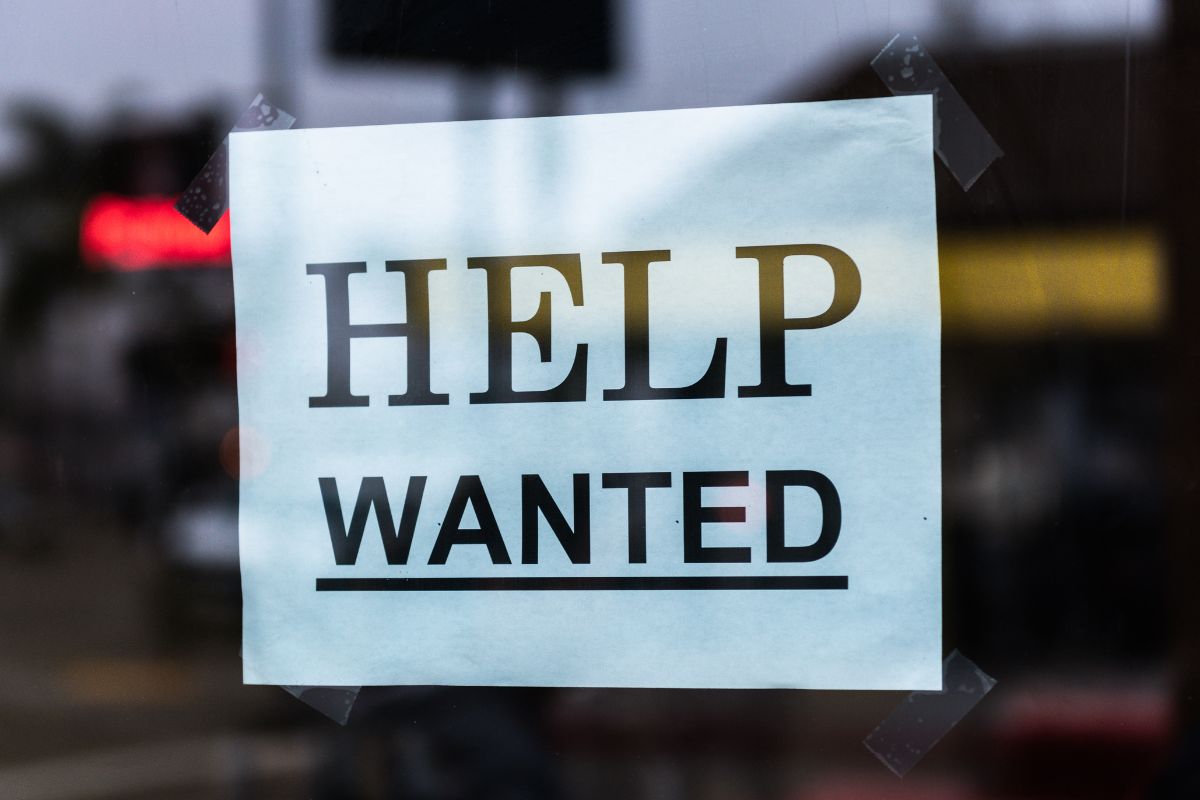Coronavirus crisis could see a lost generation of vulnerable teenagers falling through gaps in the education and social care systems

@ChildrensComm – 120,000 teens are in danger of slipping out of sight as the country emerges from lockdown
Thousands of teens are at risk of never returning to full time education and are easy prey for criminal gangs
Anne Longfield, the Children’s Commissioner for England, is today publishing new analysis revealing thousands of teenagers in England are falling through the gaps in the school and social care system. The report sets out the risks affecting tens of thousands of teenagers including persistent absence from school, exclusions, alternative provision, dropping out of the school system in Year 11, or going missing from care.
The Children’s Commissioner highlights the heightened impact of lockdown on the 120,000 teenagers in England – one in 25 of all teens – already slipping out of sight before Coronavirus. She also warns these children already at risk could be joined by many more who struggle to adapt to a return to ‘normal’ after six months out of school. Unless these children are re-engaged in society, a whole generation of vulnerable teens could stay at risk of educational failure and unemployment, or crime or exploitation.
The analysis reveals the number of teenagers (aged 13-17) in England, for each local authority, who were already falling through gaps in education and social care provision before Covid-19. By September, schools will have been closed to most teenagers for half a year and children’s social care provision has also been curbed. The Children’s Commissioner is concerned that these teenagers, who were slipping through existing gaps in the system, will remain ‘invisible’ even after the lockdown restrictions ease. These are children who are likely to have needs which schools struggle to meet but who often do not reach the threshold for social service involvement. It also comes at a time when youth services funding has been cut by 60% over the last 10 years.
The report calls on councils to work with schools and police to focus resources on these teenagers at risk of becoming ‘invisible’ to services or who have gone missing under lockdown. These children are easy prey to criminal gangs and are at very high risk of becoming ‘NEET’ (Not in Education, Employment or Training). The Commissioner argues that ensuring they have a way of getting back into education, training or work is crucial for any economic recovery from Covid-19, and that many already vulnerable children who have been missing the structure that school brings will need extra support.
The Commissioner calls on the Government, schools, local authorities, police forces and safeguarding partnerships to work together on a plan to identify, track, support and ultimately re-engage these children.
The report also calls for summer schemes – including sports clubs, play schemes, holiday clubs and youth clubs – which give young people a range of safe, positive, structured activities to take part in, led by trusted adults and role models. To make this happen, it says the government must work with local areas to remove any barriers to delivering these schemes. It also calls on the government to advise schools to support these schemes from within their additional £650 million ‘catch up’ funding.
The report analyses data on all teenagers aged 13-17 who were on the radar of schools and children’s social care in 2017/18. It finds that 480,000 of these children had some kind of additional need, such as special educational need or disability (SEND), Child in Need (CIN) referral/episode, a fixed or permanent exclusion, high levels of school absence, or dropping out of school in Year 11. Around 100,000 of these teenagers were receiving high-cost statutory support such as being in care, being on a child protection plan, having an education care and health plan or being enrolled at a Pupil Referral Unit.
The Children’s Commissioner is particularly concerned about the subset of these children who may not be getting the right level of help and may become removed from the systems intended to support them. We describe these children as ‘falling through the gaps’ and define this as children who:
- Have multiple Child In Need referrals during the year but do not end up on a CIN plan
- Have SEND and also multiple exclusions from school during the year
- Have a permanent exclusion but do not enter a PRU during the year
- Are in care and living in an unregulated placement
- Are in care and have multiple placement changes during the year
- Have a permanent exclusion
- Have high levels of unauthorised absence
- Drop out of the school system in Year 11
- Miss at least an entire term of school in the previous two years
- Are in care but go missing from their placement multiple times in a year
In 2017/18 around 81,000 teenagers in England met at least one of these criteria, including 13,000 who met two or more criteria. On top of this, another 42,000 teenagers were NEET.
Adding these up, there were 123,000 teens in England who were falling through gaps in mainstream provision and becoming invisible to services in 2017/18. This is 4 in every 100 teenagers aged 13-17 – around 1 in 25 teens.
Anne Longfield, Children’s Commissioner for England, said:
“Even before the lockdown, 1 in 25 teenagers in England were falling through gaps in the school or social services systems. This puts them at increased risk of unemployment or of exploitation by gangs and organised criminals. This summer I am particularly worried that teenagers who have finished year 11, who have seen their apprenticeship collapse, or have simply lost their way through lockdown will simply fall off the radar. Teenagers in colleges have so far been left out of catch-up funding.
“Many of these children, and I fear many thousands of other vulnerable teenagers, have had very little structure to their lives over the last six months. School was often a stretch for them, and I am concerned we are never going to get some of them back into education. If we do not act now, this could result in a lost generation of teens – dropping out of school, going under the radar, getting into trouble, and at risk of being groomed by gangs and criminals.
“We need to identify these children quickly and do whatever it takes over the summer to stabilise their lives and get them prepared for the structure of school again.
“We must not look back in five years at a generation of vulnerable teenagers who fell out of society and ended up drifting into crime and unemployment. They need extra help now as we emerge from lockdown.”
Cllr Judith Blake, Chair of the Local Government Association’s Children and Young People Board, said:
“Councils share the Commissioner’s concerns about the impact of the coronavirus crisis on vulnerable teenagers.
“Social workers and colleagues across children’s services and education have done an incredible job trying to keep children and young people safe and well during this hugely challenging period.
“However, children’s social care referrals have fallen by more than half in some areas, from an average of almost 1,800 per day, which raises concerns that not all young people are getting the support they need.
“Councils are working with their partners and communities to try to identify children who may be at risk. As this report reinforces, it is vital that councils have the funding they need to support children, young people and families as part of the national recovery.
“The impact of the pandemic on some children will be far-reaching, and it will be essential that the right services are there to support them.”
A Government spokesperson said:
“Schools and colleges have remained open throughout the pandemic to vulnerable children and those of critical workers, and we have worked across Government and with the sector to make sure young people stay safe at this time.
“Ahead of a full return to school and college in September, we are expanding frontline charity support and helplines to reach more young people, working with local authorities and schools to ensure they have ‘eyes and ears’ on those at most risk, and supporting pupils leaving Alternative Provision this summer to stay engaged in education, employment or training. We are also investing £100 million in remote education, including devices and routers that help these children keep in contact with schools and social workers.
“This summer, schools and other out of schools settings will also be able to run holiday clubs and we have worked with the National Citizenship Service who will be running programs of activities for teenagers across the country.”
- The Prime Minister hosted the Hidden Harms Summit on May 21 to drive the response to hidden crimes, including the abuse of vulnerable children. This set out clear actions for all those involved in protecting young people – government, charities, police forces and social workers.
- We are also looking at how to support the safety and wellbeing of vulnerable children in the longer term, including expanding the number of social workers placed in schools to help teachers identify those children at risk.
- We have brought back thousands of social workers onto a temporary register.
- The PM has confirmed from 4 July providers running holiday clubs and activities for children and young people over the summer holiday will be able to open under eased lockdown measures
- We recently announced bespoke package of support for each year 11 currently in AP to help them engage them in further education, employment or training through the next year.
- We are also looking at how to support the safety and wellbeing of vulnerable children in the longer term, including expanding the number of social workers placed in schools to help teachers identify those children at risk.
- We have provided £7m to the See, Hear, Respond service led by Barnardo’s, as well as online and face to face support, this includes youth work and crisis support particularly for those at risk of or experiencing various forms of exploitation, including criminal exploitation.
- DfE and HO launched the joint £7.6m Vulnerable Children National Charities Strategic Relief Fund in order to support VCSE organisations with an annual income above £40m who are in financial distress as a result of COVID-19 and who are working to safeguard vulnerable children. We hope to make awards later this month.
- We have reflected extra-familial harms to children, including CSE and criminal exploitation, in ‘Working Together to Safeguard Children’ and ‘Keeping Children Safe in Education’ statutory guidance to support practitioners in preventing children from being criminally exploited.
- We are funding a £2m Tackling Child Exploitation support programme (TCESP) to help safeguarding partners in local areas tackle extra-familial harms, like child sexual and criminal exploitation.
- The Government is investing £25 million towards tackling county lines, including funding for law enforcement activity, expanding the National County Lines Co-ordination Centre (NCLCC) and expanding support for victims of county lines exploitation.
- We have also invested £70 million into local, multi-agency Violence Reduction Units (VRUs) to identify the drivers of violent crime and develop bespoke solutions. All VRUs work with local educational providers to prevent children being drawn towards serious violence.
The full report and accompanying data tables is available in the link below. The Children’s Commissioner’s Office has also provided examples of summer schemes running over the next few weeks.
https://www.childrenscommissioner.gov.uk/publication/teenagers-falling-through-the-gaps/
The Children’s Commissioner’s Office has broken down these statistics for local area in England. While the national rate of teens falling through the gaps was around 4%, in Liverpool, Medway and Blackpool it was over 7%. At the other end of the scale, the rate was below 2.5% in Wokingham, Barnet, Kingston upon Thames, Westminster, Harrow, Richmond upon Thames, West Berkshire and Rutland.
Because of data limitations, this analysis does not include teenagers who may be falling through gaps in other ways – for example, those with untreated mental health needs or involved in gangs but not known to the police. The data on these groups is not available at a local level or in a way that can be matched with the data used here. Therefore, the figures in this report should be seen as conservative and partial estimates of the true scale of the issues affecting vulnerable teens.











Responses